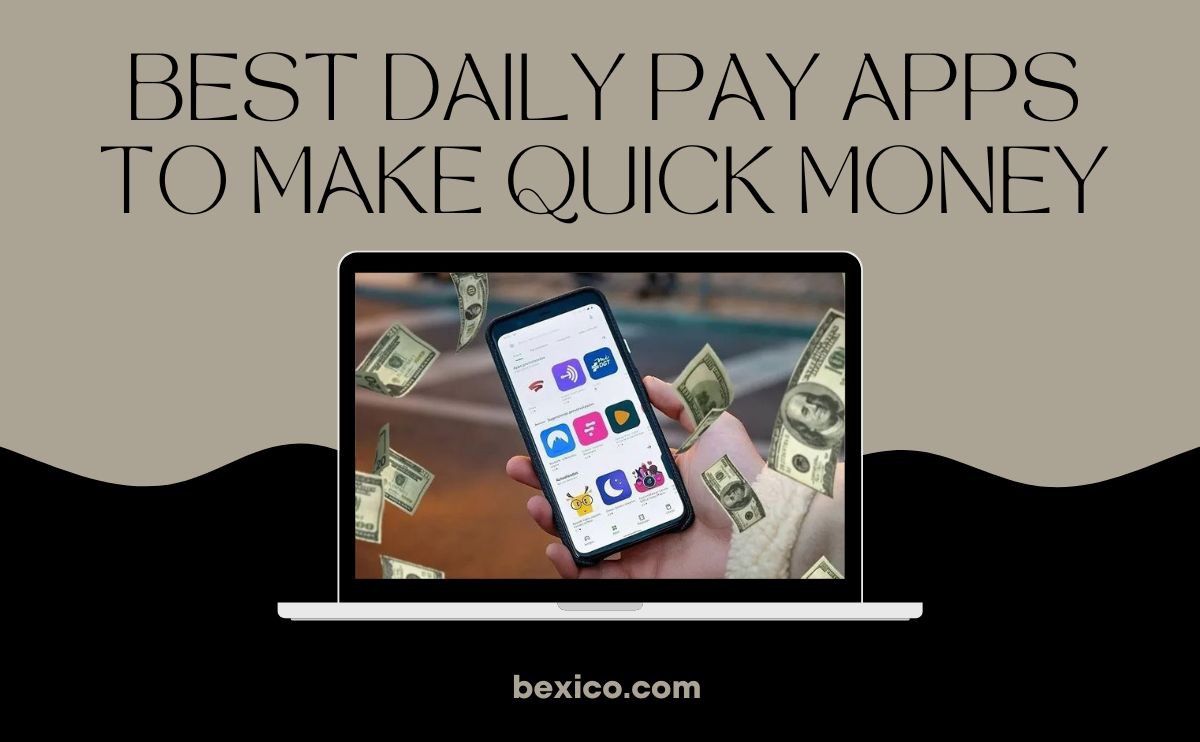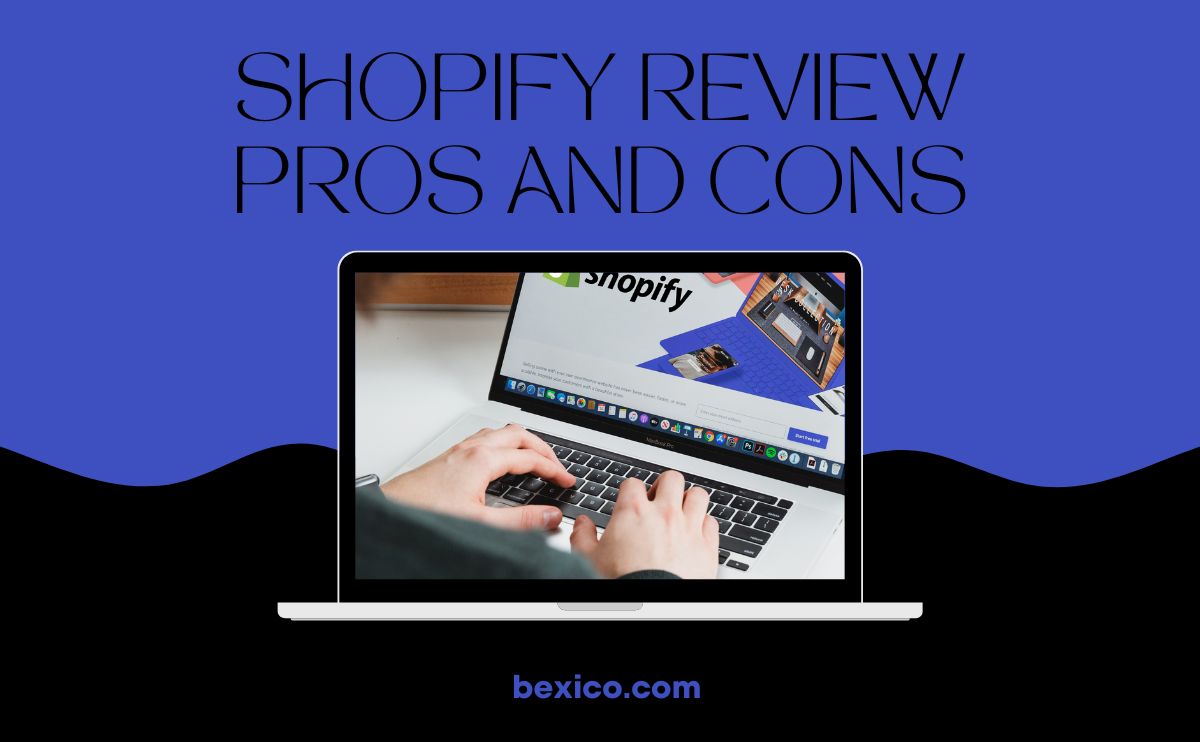Unleash Your Blog’s Profit Potential: How to Make Money Blogging
Unleash Your Potential. How to Make Money Blogging and Turn Your Passion into Profit. Do you have a burning passion, an insatiable desire to share your knowledge, experiences, or creativity with the world? Imagine if you could turn that passion into a thriving online business, generating a steady income doing what you love. With the power of blogging, you can transform your dreams into reality. In this eye-catching and comprehensive guide, we unveil the secrets of making money blogging, providing you with the essential tools and strategies to unlock your full potential. Whether you’re a seasoned writer seeking to monetize your blog or a beginner ready to take the plunge into the world of online entrepreneurship, this guide is your roadmap to success. Discover the art of selecting a profitable niche that not only ignites your passion but also resonates with a hungry audience eager to devour your content. Learn how to position yourself as an authority in your niche, capturing the attention of readers and brands alike.
But it doesn’t stop there. Building a successful blog requires more than just words on a screen. Dive into the realm of blog setup, where captivating design, seamless functionality, and user-friendly navigation come together to create an irresistible platform that keeps visitors hooked. The heartbeat of your blog lies in its content. Unleash the power of compelling storytelling and valuable information, honing your writing skills to captivate readers, inspire action, and build a loyal following. From crafting attention-grabbing headlines to mastering the art of SEO, you’ll learn how to optimize your content for maximum visibility and engagement. Monetization is the key to turning your passion into profit. Explore the myriad of income streams available to bloggers, from display advertising and affiliate marketing to selling digital products, collaborating with brands, and even building a community through membership subscriptions. Find the strategies that resonate with your audience and align with your blog’s unique identity. But building a successful blog is not just about content and monetization. Effective marketing and promotion are crucial to attracting an audience and expanding your reach. Dive into the world of social media, email marketing, and collaborations, leveraging these powerful tools to build your personal brand and forge valuable connections within your industry.
Making money blogging is not an overnight success story. It requires dedication, perseverance, and a commitment to continuous improvement. But with our comprehensive guide, you’ll gain the knowledge and confidence to navigate the challenges and seize the opportunities that lie ahead. Don’t let your passion remain a hidden gem. Harness the power of blogging to share your voice, impact lives, and create a sustainable income stream. Unleash your potential, break free from the constraints of traditional employment, and embrace the freedom and flexibility of being your own boss. Are you ready to embark on an exciting journey of self-discovery, growth, and financial empowerment? Let this guide be your trusted companion, illuminating the path to making money blogging and turning your passion into profit. The time is now. Take that leap of faith, believe in your abilities, and unlock the doors to a world where your dreams and financial success intertwine. Get ready to make money blogging like never before. Your journey starts here!
Unleash the Power of Blogging for Profit and Impact
Welcome to the exciting world of blogging, where creativity, passion, and entrepreneurship intersect. In this digital age, blogging has emerged as a powerful platform for individuals to share their knowledge, experiences, and perspectives with the world. But did you know that blogging can also be a lucrative venture, enabling you to make money while pursuing your passions? In this chapter, we will embark on a journey to explore the vast potential of blogging as a source of income and discover how you can leverage this medium to create a profitable and impactful online presence.
The Rise of Blogging
- Discuss the evolution of blogging from its early beginnings to its current prominence in the digital landscape.
- Highlight the accessibility and scalability of blogging, making it an attractive avenue for individuals seeking to express themselves and build an online presence.
The Power of Blogging
- Explore the various benefits of blogging, beyond just sharing thoughts and ideas.
- Discuss how blogging can help establish your authority in a niche, connect with like-minded individuals, and make a positive impact on your audience.
The Potential for Profit
- Introduce the idea that blogging can be a source of income and provide financial freedom.
- Discuss the different monetization avenues available to bloggers, such as advertising, affiliate marketing, sponsored content, digital products, and more.
Setting Realistic Expectations
- Emphasize the importance of setting realistic expectations when it comes to making money from blogging.
- Highlight that building a profitable blog requires time, effort, and persistence, and success may not be instantaneous.
The Intersection of Passion and Profit
- Discuss the beauty of blogging as a platform that allows individuals to pursue their passions and make money simultaneously.
- Encourage readers to identify their areas of interest and expertise that can form the foundation of their blog’s content.
The Structure of this Guide
Provide an overview of the subsequent chapters in this guide, which will cover key topics such as choosing a profitable niche, setting up a blog, creating high-quality content, building an engaged audience, implementing monetization strategies, effective marketing techniques, analyzing data, and maintaining consistency.
In this chapter, we have laid the foundation for your blogging journey by exploring the potential of blogging as a profitable and impactful endeavor. By harnessing the power of blogging, you have the opportunity to share your passions, connect with a global audience, and earn a living doing what you love. However, it’s important to approach blogging with realistic expectations, understanding that success requires dedication, patience, and continuous learning. Now, let’s move forward and dive deeper into the world of blogging, starting with choosing a profitable niche. Get ready to uncover the secrets to selecting a niche that resonates with your interests, audience demand, and profit potential.
Choosing a Profitable Niche: Uncovering Your Path to Success
In the vast and diverse world of blogging, choosing the right niche is crucial to your success. A niche represents a specific area of focus for your blog, allowing you to target a specific audience and establish yourself as an authority in that field. In this chapter, we will delve into the process of choosing a profitable niche that aligns with your interests, expertise, and audience demand. By selecting a niche wisely, you lay the foundation for a successful and sustainable blogging career. So, let’s explore the steps to uncovering your path to success by choosing a profitable niche.
- Identify Your Passions and Interests
- Reflect on your personal passions, hobbies, and areas of expertise.
- Consider the topics that genuinely excite and inspire you, as they will drive your motivation and commitment to your blog.
- Research Market Demand
- Conduct thorough research to identify niches that have a sizable audience and demand.
- Explore popular trends, keywords, and discussions in your areas of interest using tools like Google Trends, Google keyword planner research tools, and social media platforms.
- Assess Competition
- Evaluate the level of competition within potential niches.
- Determine whether there is room for you to establish your unique voice and make an impact.
- Look for underserved sub-niches or angles within broader topics that offer opportunities for differentiation.
- Define Your Target Audience
- Develop a clear understanding of the audience you want to serve.
- Define their demographics, interests, challenges, and aspirations.
- Tailor your niche selection to align with the needs and desires of your target audience.
- Consider Monetization Potential
- Explore the monetization potential of your chosen niche.
- Research potential revenue streams such as affiliate marketing, advertising, sponsored content, digital products, or membership programs.
- Ensure that your niche has a viable market for monetization opportunities.
- Evaluate Long-Term Sustainability
- Assess the long-term sustainability of your chosen niche.
- Consider factors such as evolving trends, audience longevity, and your ability to continuously create valuable content.
- Aim for a niche that allows for growth and adaptation over time.
- Balance Passion and Profitability
- Strive for a balance between your passion and the profitability of your chosen niche.
- Choose a niche that aligns with your interests while also offering opportunities for financial success.
- Remember that passion alone may not sustain your blog if it lacks audience demand and monetization potential.
- Test and Validate
- Validate your chosen niche by testing the waters before fully committing to it.
- Start by creating a few pieces of content within your chosen niche and gauge the audience response.
- Pay attention to engagement, feedback, and audience growth to determine whether the niche resonates with your target audience.
Choosing a profitable niche is a crucial step towards building a successful blog. By identifying your passions, researching market demand, assessing competition, defining your target audience, considering monetization potential, evaluating long-term sustainability, and striking a balance between passion and profitability, you can uncover a niche that sets you up for success.
Remember that the niche you choose will influence the direction and focus of your blog. Take the time to explore various options, conduct thorough research, and trust your instincts. The right niche will allow you to connect deeply with your audience, establish your authority, and create a blog that thrives in the competitive digital landscape. Now that you have chosen a profitable niche, it’s time to move forward and bring your blog to life. In the next chapter, we will explore the essential steps to setting up your blog and creating a solid foundation for your online presence. Get ready to dive into the exciting world of blog setup.
Setting Up a Blog: Building Your Online Presence
Now that you have chosen a profitable niche, it’s time to bring your blogging aspirations to life by setting up your own blog. In this chapter, we will guide you through the essential steps of creating a blog from scratch. From choosing a platform to selecting a domain name, hosting your blog, and customizing its appearance, we will provide you with the knowledge and tools necessary to establish a professional and captivating online presence. So, let’s get started on the journey of setting up your blog.
- Choose a Blogging Platform
- Explore different blogging platforms such as WordPress, Blogger, and Squarespace.
- Compare their features, ease of use, customization options, and scalability.
- Select the platform that best suits your needs, both for the present and future growth of your blog.
- Select a Domain Name
- Brainstorm a unique and memorable domain name for your blog.
- Ensure that it reflects your niche, is easy to spell and remember, and aligns with your branding goals.
- Check the domain’s availability and secure it through a domain registrar.
- Set Up Web Hosting
- Choose a reliable web hosting provider that meets your requirements for speed, uptime, and customer support.
- Consider factors like server location, storage space, bandwidth, and scalability options.
- Sign up for a hosting plan and link your domain name to your hosting account.
- Install and Configure Your Blogging Platform
- Follow the instructions provided by your chosen blogging platform to install it on your hosting account.
- Customize your blog’s settings, such as language, time zone, permalinks, and comment moderation.
- Set up essential features like user roles, security measures, and backup systems.
- Customize Your Blog’s Appearance
- Choose a visually appealing and mobile-responsive theme that aligns with your blog’s niche and branding.
- Customize the theme’s colors, typography, header, footer, and layout to create a unique and engaging design.
- Install and configure plugins or extensions that enhance your blog’s functionality and user experience.
- Create Essential Pages
- Craft essential pages that provide information about your blog and engage your visitors, such as an About Me page, Contact page, and Privacy Policy page.
- Write compelling and concise content for each page, ensuring clarity and professionalism.
- Set Up Navigation and Categories
- Organize your blog’s content by creating categories or topics that align with your niche.
- Set up a user-friendly navigation menu that allows visitors to easily navigate through your blog and find the content they’re interested in.
- Install Essential Plugins and Tools
- Enhance your blog’s functionality by installing essential plugins and tools.
- Consider plugins for SEO optimization, social media integration, email list building, analytics tracking, and security enhancements.
- Test and Optimize
- Before launching your blog, thoroughly test its functionality, responsiveness, and user experience across different devices and browsers.
- Optimize the loading speed of your blog by compressing images, using caching mechanisms, and minimizing code.
Setting up a blog is an exciting and essential step towards establishing your online presence. By choosing a memorable domain name, selecting a reliable web hosting provider, deciding on a blogging platform, installing and configuring your blog, designing a visually appealing site, creating essential pages, setting up navigation and categories, and configuring essential settings, you are building a strong foundation for your blog’s success.
Remember to prioritize user experience, aesthetics, and search engine optimization while setting up your blog. Create a professional and engaging online platform that reflects your brand identity and resonates with your target audience. Now that your blog is up and running, it’s time to focus on the most critical aspect: creating high-quality content. In the next chapter, we will explore the strategies and techniques to craft compelling and valuable content that engages your readers and sets your blog apart.
Creating High-Quality Content: Igniting the Spark That Engages and Inspires
In the vast blogosphere, where content is king, creating high-quality content is the key to capturing the attention of your audience and building a loyal following. It’s not just about churning out words; it’s about crafting content that ignites the spark of engagement, resonates with your readers, and inspires them to take action. In this chapter, we will explore the essential elements of creating high-quality content that stands out from the crowd. So, let’s dive in and unleash the power of compelling content creation.
Understanding Your Audience
To create content that resonates with your readers, it’s crucial to understand their needs, desires, and pain points. Take the time to conduct audience research, analyze demographics, and engage in conversations with your target audience. Use tools like surveys, social media listening, and keyword research to gain valuable insights. By understanding your audience on a deep level, you can tailor your content to meet their specific needs and preferences.
Embracing Authenticity and Voice
Your unique voice is what sets your blog apart from the rest. Embrace your authenticity and let your personality shine through in your writing. Be genuine, relatable, and transparent with your audience. Share your personal stories, experiences, and insights. By infusing your writing with authenticity, you create a deeper connection with your readers and establish yourself as a trustworthy authority in your niche.
Crafting Attention-Grabbing Headlines
In the digital age, where attention spans are short, a captivating headline is essential to grab the attention of your audience. Craft headlines that are attention-grabbing, intriguing, and promise value. Use power words, pose questions, or make bold statements that pique curiosity. A well-crafted headline sets the stage for your content and entices readers to click and explore further.
Telling Compelling Stories
Humans are wired to connect through stories. Incorporate storytelling techniques into your content to captivate your readers’ hearts and minds. Whether it’s through personal anecdotes, case studies, or real-life examples, storytelling adds depth, emotion, and relatability to your content. Use narratives to engage your audience, inspire them, and create a lasting impact.
Providing Value and Solving Problems
High-quality content goes beyond entertaining; it provides value and solves problems for your audience. Identify the pain points and challenges faced by your readers and create content that offers practical solutions, tips, and actionable advice. Position yourself as a trusted resource and problem-solver within your niche. By consistently providing value, you build trust and credibility with your audience.
Incorporating Visual Elements
Visual elements can enhance the impact and appeal of your content. Incorporate images, infographics, videos, or other visual media that align with your content’s message. Visuals not only break up the text but also make your content more engaging and shareable. Optimize images for web, ensuring they load quickly and align with your blog’s aesthetics. Use visuals strategically to support your content and create a visually appealing experience for your readers.
Prioritizing Readability and Formatting
Readability plays a significant role in how your content is consumed. Break up your content into shorter paragraphs, use bullet points and subheadings to make it easy to skim through, and choose a clean and legible font. Consider the font size and line spacing to ensure comfortable reading. Proofread and edit your content for clarity, grammar, and spelling errors. A well-formatted and error-free piece of content improves the overall user experience and keeps your readers engaged.
Encouraging Interaction and Engagement
Great content sparks conversation and engagement. Encourage your readers to interact by asking questions, inviting comments, or conducting polls. Respond promptly to comments and engage in conversations with your audience. Cultivate a sense of community and make your readers feel valued. Incorporate social sharing buttons to make it easy for readers to share your content with their networks, increasing its reach and potential impact.
Creating high-quality content is the heart and soul of a successful blog. By understanding your audience, embracing authenticity, crafting attention-grabbing headlines, telling compelling stories, providing value, incorporating visual elements, prioritizing readability, and encouraging engagement, you can create content that stands out in the crowded digital landscape.
Remember, each piece of content you create is an opportunity to make a meaningful connection with your audience, inspire them, and make a lasting impact. Strive for excellence in your content creation process and let your passion and expertise shine through. With high-quality content, you can elevate your blog to new heights and build a loyal community of engaged readers who keep coming back for more. So, unleash your creativity, embrace the art of content creation, and let your voice be heard!
Building an Engaged Audience: Nurturing Relationships for Long-Term Success
As a blogger, your success not only relies on creating high-quality content but also on building an engaged audience. An engaged audience is one that interacts, shares, and advocates for your content, ultimately fueling the growth and success of your blog. In this chapter, we will explore effective strategies to build an engaged audience that not only supports your blog but also becomes a community of loyal followers. So, let’s dive into the world of audience building and discover the key to long-term success.
- Understanding Your Target Audience
- Continually analyze and understand the demographics, interests, and preferences of your target audience.
- Develop buyer personas to gain deeper insights into their motivations, challenges, and aspirations.
- Use this knowledge to tailor your content, messaging, and engagement strategies to resonate with your audience.
- Consistency and Frequency
- Consistency is vital in building an engaged audience. Establish a regular publishing schedule and stick to it.
- Determine the optimal frequency of your content based on your audience’s preferences and your capacity to deliver.
- Be reliable and dependable, ensuring your audience knows when to expect new content from you.
- Engaging with Your Audience
- Foster a two-way conversation with your audience by actively engaging with them.
- Respond promptly to comments, messages, and emails, showing genuine interest in their thoughts and feedback.
- Initiate conversations by posing questions, seeking opinions, and encouraging discussions within your blog community.
- Leveraging Social Media Platforms
- Identify the social media platforms where your target audience is most active.
- Create a consistent brand presence across those platforms, sharing your content and engaging with your audience.
- Use social media as a tool to amplify your reach, connect with influencers, and build relationships with your readers.
- Building an Email List
- Offer valuable incentives, such as exclusive content, free resources, or discounts, to encourage readers to join your email list.
- Regularly send newsletters or updates to your subscribers, providing them with valuable content and insights.
- Personalize your emails and make them relevant to your subscribers’ interests and needs.
- Collaboration and Guest Posting
- Collaborate with other bloggers, influencers, or experts in your niche to expand your reach and tap into new audiences.
- Guest post on relevant and reputable websites, exposing your blog to a wider audience.
- Build mutually beneficial relationships through collaborations and guest posting, benefiting both parties.
- Creating a Sense of Community
- Foster a sense of community within your blog by creating a space where readers can connect and engage with each other.
- Encourage readers to interact, share their experiences, and support one another.
- Consider hosting live events, webinars, or forums to facilitate direct interactions and strengthen the sense of community.
- Monitoring Analytics and Feedback
- Regularly monitor your blog’s analytics to gain insights into audience behavior, popular content, and engagement metrics.
- Pay attention to feedback from your audience, whether through comments, surveys, or social media interactions.
- Use this data to refine your strategies, create more of what resonates with your audience, and improve overall engagement.
Building an engaged audience is a fundamental aspect of blogging success. By understanding your target audience, maintaining consistency, actively engaging with your audience, leveraging social media, building an email list, pursuing collaborations, creating a sense of community, and monitoring analytics and feedback, you can cultivate a loyal following that supports and advocates for your blog.
Remember, an engaged audience is more than just numbers. It’s a community of individuals who connect with your content, share it with others, and actively participate in discussions. Nurture your audience relationships, provide value, and prioritize their needs. In doing so, you’ll build a thriving blog community that propels your blog’s growth and sets the stage for long-term success. So, embark on the journey of audience building, embrace the power of connection, and watch your blog flourish.
Monetization Strategies: Turning Your Passion into Profit
Once you’ve built a solid foundation for your blog and have cultivated an engaged audience, it’s time to explore monetization strategies that can turn your passion into profit. While blogging is a labor of love, it’s also an opportunity to generate income and monetize your expertise. In this chapter, we will delve into various monetization strategies that can help you leverage your blog’s influence and create sustainable revenue streams. So, let’s explore the world of monetization and unlock the potential of your blog.
- Display Advertising
- Utilize display advertising networks like Google AdSense to display targeted ads on your blog.
- Optimize ad placements to maximize visibility without compromising user experience.
- Track ad performance and experiment with different ad formats to maximize revenue.
- Affiliate Marketing
- Join affiliate programs and promote products or services relevant to your niche.
- Embed affiliate links within your content and earn a commission for every sale or action generated through your referral.
- Recommend products genuinely, focusing on their value and relevance to your audience.
- Sponsored Content
- Collaborate with brands and businesses to create sponsored content.
- Maintain transparency and disclose sponsored content to your audience.
- Ensure that sponsored content aligns with your blog’s niche and provides value to your readers.
- Digital Products
- Create and sell digital products such as e-books, online courses, or guides.
- Leverage your expertise to provide valuable educational resources to your audience.
- Use platforms like Teachable, Sendowl or Gumroad to host and sell your digital products.
- Membership and Subscription Models
- Offer premium content or exclusive perks to members through a subscription model.
- Develop a membership community where members can access premium content, interact with you, and connect with fellow members.
- Provide added value, such as access to webinars, private forums, or one-on-one consultations.
- Sponsored Events and Workshops
- Host sponsored events, workshops, or webinars related to your niche.
- Collaborate with brands or industry experts to create valuable learning experiences for your audience.
- Charge registration fees or secure sponsorships to monetize these events.
- Freelancing and Consulting Services
- Leverage your expertise to offer freelance services or consulting to individuals or businesses in your niche.
- Promote your services on your blog and use your reputation as a blogger to attract clients.
- Develop a portfolio showcasing your previous work and client testimonials.
- Selling Physical Products or Merchandise
- Create and sell physical products related to your niche, such as merchandise, artwork, or personalized items.
- Utilize e-commerce platforms like Shopify or Etsy to set up your online store.
- Promote your products through your blog and social media channels.
Monetizing your blog is an exciting opportunity to transform your passion into a profitable venture. By diversifying your revenue streams through display advertising, affiliate marketing, sponsored content, digital products, membership models, sponsored events, freelancing, and selling physical products, you can create sustainable income while continuing to provide value to your audience.
Remember, monetization should be approached with integrity and authenticity. Choose strategies that align with your blog’s mission and values, and always prioritize the needs and interests of your audience. Building trust and maintaining the quality of your content are paramount to long-term success. So, embrace the possibilities, explore different monetization avenues, and embark on the journey of turning your blog into a profitable enterprise that fulfills both your passion and your financial goals.
Implementing Effective Marketing Techniques: Amplifying Your Blog’s Reach
Marketing plays a crucial role in expanding the reach of your blog and attracting new readers to your content. In this chapter, we will explore various effective marketing techniques that can help you amplify your blog’s visibility, increase traffic, and ultimately grow your audience. By implementing these strategies, you can enhance your blog’s impact, connect with a broader audience, and solidify your presence in the digital landscape. So, let’s dive into the world of marketing and unleash the potential of your blog.
- Search Engine Optimization (SEO)
- Optimize your blog posts and website for search engines to improve organic visibility.
- Conduct keyword research to identify relevant and high-ranking keywords for your niche.
- Use keywords strategically in your content, headings, meta tags, and URLs.
- Focus on creating high-quality, informative, and engaging content that resonates with your target audience.
- Content Marketing
- Develop a content marketing strategy to consistently create valuable and shareable content.
- Promote your content through various channels, including social media, email marketing, and guest posting.
- Leverage different formats like blog posts, videos, infographics, or podcasts to cater to different audience preferences.
- Collaborate with influencers or industry experts to co-create and amplify your content.
- Social Media Marketing
- Identify the social media platforms where your target audience is most active.
- Establish a strong presence on those platforms and share your blog posts, updates, and valuable content.
- Engage with your audience, respond to comments, and initiate conversations.
- Utilize social media advertising options to reach a wider audience and promote your blog.
- Email Marketing
- Build an email list of subscribers interested in your blog’s content.
- Send regular newsletters, updates, or exclusive content to your subscribers.
- Personalize your emails and segment your list to deliver relevant content to specific groups.
- Include clear calls-to-action (CTAs) in your emails to encourage engagement and drive traffic to your blog.
- Influencer Marketing
- Collaborate with influencers in your niche who have a significant following.
- Develop partnerships where influencers promote your blog to their audience.
- Choose influencers whose values align with your brand and who can genuinely recommend your content.
- Guest Posting
- Write guest posts for reputable blogs and websites within your niche.
- Include a bio or author box with a link back to your blog.
- Provide high-quality, valuable content that showcases your expertise and encourages readers to visit your blog.
- Collaborations and Cross-Promotion
- Collaborate with other bloggers, podcasters, or content creators in your niche.
- Explore opportunities for cross-promotion, where you promote each other’s content or offer joint resources.
- Participate in interviews, webinars, or panel discussions to increase your visibility and reach new audiences.
- Data Analytics and Tracking
- Regularly monitor and analyze your website and blog analytics.
- Use tools like Google Analytics to gain insights into traffic sources, user behavior, and popular content.
- Identify trends, patterns, and areas for improvement to refine your marketing strategies.
Implementing effective marketing techniques is essential to expand the reach of your blog, attract new readers, and grow your audience. By utilizing search engine optimization, content marketing, social media marketing, email marketing, influencer marketing, guest posting, collaborations, and tracking data analytics, you can amplify your blog’s visibility and establish a strong presence in your niche.
Remember to tailor your marketing efforts to your target audience, deliver valuable content consistently, and engage with your audience across various channels. Stay adaptable and open to trying new marketing strategies as the digital landscape evolves. With effective marketing techniques, you can reach a wider audience, increase your blog’s influence, and create meaningful connections with readers who become loyal followers of your blog. So, embrace the power of marketing and let your blog shine in the digital sphere.
Analyzing and Adapting: Maximizing Blog Performance through Data Insights
To ensure the long-term success of your blog, it’s crucial to regularly analyze its performance and make data-driven decisions. In this chapter, we will explore the importance of analyzing and adapting your blog strategy based on data insights. By leveraging analytics tools, monitoring key metrics, and staying attuned to audience preferences, you can optimize your blog’s performance, refine your content strategy, and continuously improve the user experience. So, let’s delve into the realm of data analysis and learn how to make informed decisions for your blog’s growth.
- Establishing Key Performance Indicators (KPIs)
- Identify the key metrics that align with your blog’s objectives and goals.
- Examples of KPIs include website traffic, engagement metrics, conversion rates, and revenue generated.
- Set specific targets for each KPI to track your progress and measure success.
- Utilizing Web Analytics Tools
- Implement a robust web analytics tool, such as Google Analytics, to gather data about your blog’s performance.
- Monitor important metrics like page views, bounce rate, average session duration, and referral sources.
- Utilize the data to gain insights into user behavior, identify popular content, and track the effectiveness of marketing efforts.
- Analyzing Audience Insights
- Explore demographic data to understand the characteristics of your audience, such as age, gender, and location.
- Analyze audience behavior, including time spent on the site, popular content, and click-through rates.
- Use audience insights to refine your content strategy, tailor your messaging, and cater to their preferences.
- Content Performance Analysis
- Evaluate the performance of individual blog posts and content formats.
- Identify the most popular topics, formats, and writing styles that resonate with your audience.
- Analyze engagement metrics like comments, social shares, and time spent on page to gauge content effectiveness.
- Conversion Tracking
- Implement conversion tracking to measure the effectiveness of your monetization strategies.
- Track conversions such as newsletter sign-ups, product purchases, or lead generation.
- Identify the best-performing monetization channels and optimize your strategies based on conversion data.
- A/B Testing and Experimentation
- Conduct A/B tests to compare different elements of your blog, such as headlines, visuals, or call-to-action buttons.
- Experiment with variations and measure the impact on user engagement and conversion rates.
- Continuously refine your blog based on data insights and user preferences.
- Staying Updated with Industry Trends
- Keep a pulse on the latest trends, developments, and innovations in the blogging industry.
- Follow industry influencers, participate in forums or communities, and attend relevant conferences or webinars.
- Adapt your blog strategy to align with emerging trends and changes in user behavior.
- Iterating and Adapting
- Regularly review and assess the performance of your blog against your established KPIs.
- Identify areas for improvement, prioritize them, and implement necessary changes.
- Embrace a growth mindset and remain open to experimentation and adaptation.
Analyzing and adapting based on data insights is crucial for maximizing your blog’s performance and long-term success. By leveraging web analytics tools, monitoring key metrics, analyzing audience insights, evaluating content performance, tracking conversions, conducting A/B tests, staying updated with industry trends, and iterating your blog strategy, you can continuously improve and deliver a better experience for your audience.
Remember, data is the key to making informed decisions and understanding the ever-evolving needs and preferences of your audience. Embrace data analysis as an ongoing practice, adapt your strategies accordingly, and strive for continuous growth and improvement. With a data-driven approach, you can ensure that your blog remains relevant, engaging, and successful in the dynamic digital landscape.
Consistency and Persistence: The Path to Long-Term Blogging Success
Consistency and persistence are two fundamental qualities that can make or break your journey as a blogger. In this chapter, we will explore the importance of maintaining consistency in your blogging efforts and the power of persistence in overcoming challenges and achieving long-term success. Building a successful blog requires dedication, perseverance, and a commitment to consistently deliver valuable content to your audience. So, let’s dive into the realm of consistency and persistence and discover the key to thriving in the competitive world of blogging.
- Establishing a Consistent Publishing Schedule
- Set a realistic publishing schedule that aligns with your capacity and audience expectations.
- Stick to your schedule and deliver content consistently, whether it’s weekly, bi-weekly, or monthly.
- Consistency builds trust with your audience and keeps them engaged and coming back for more.
- Developing a Content Calendar
- Create a content calendar to plan and organize your blog posts in advance.
- Identify relevant topics, research, and outline your posts in advance to streamline your content creation process.
- A content calendar helps you stay organized, ensures a steady flow of content, and avoids last-minute rushes.
- Engaging with Your Audience Regularly
- Respond promptly to comments, messages, and emails from your audience.
- Foster an active and engaging community on your blog and social media platforms.
- Initiate conversations, ask for feedback, and encourage interaction to build strong connections with your readers.
- Adapting to Evolving Trends and Audience Preferences
- Stay attuned to industry trends, technological advancements, and changes in your audience’s preferences.
- Continuously evolve your content strategy and adapt to meet the evolving needs of your audience.
- Experiment with new formats, topics, or platforms to keep your blog fresh and engaging.
- Overcoming Challenges and Maintaining Motivation
- Recognize that challenges are inevitable in the blogging journey.
- Stay motivated by setting realistic goals, celebrating milestones, and reminding yourself of your purpose.
- Seek support from fellow bloggers, attend conferences or workshops, and engage in self-care practices to stay inspired.
- Learning from Failures and Iterating
- Embrace failures as learning opportunities and platforms for growth.
- Analyze the reasons behind any setbacks, learn from them, and make necessary adjustments.
- Experiment with different strategies, content formats, or monetization techniques to find what works best for your blog.
- Celebrating Small Wins and Milestones
- Acknowledge and celebrate the small wins and milestones along your blogging journey.
- It could be reaching a certain number of followers, receiving positive feedback, or achieving a personal goal.
- Celebrating these milestones boosts motivation, reinforces your progress, and inspires you to continue.
- Embracing the Long-Term Perspective
- Understand that blogging success takes time and perseverance.
- Don’t get discouraged by slow growth or initial setbacks.
- Stay committed to your vision, consistently deliver value, and trust that your efforts will yield results over time.
Consistency and persistence are the pillars of long-term blogging success. By establishing a consistent publishing schedule, developing a content calendar, engaging with your audience, adapting to evolving trends, overcoming challenges, learning from failures, celebrating milestones, and embracing the long-term perspective, you can build a thriving blog that stands the test of time.
Remember, blogging is a journey that requires dedication, patience, and a commitment to continuous improvement. Stay consistent in delivering valuable content, persist through challenges, and never lose sight of your passion and purpose. With consistency and persistence as your guiding principles, you can carve your path to blogging success and create a meaningful impact in the lives of your audience.
Conclusion: Embracing the Journey of Blogging
Congratulations on reaching the final chapter of this guide on how to make money blogging. Throughout this journey, we have explored various essential aspects of building a successful and profitable blog. From choosing a profitable niche to setting up your blog, creating high-quality content, building an engaged audience, implementing monetization strategies, and employing effective marketing techniques, we have covered a wide range of topics.
In this concluding chapter, let’s reflect on the key takeaways and summarize the essential elements that will help you embark on a successful blogging career.
- Passion and Purpose
- Blogging requires passion and a clear sense of purpose.
- Find a niche that aligns with your interests, expertise, and audience needs.
- Stay true to your authentic voice and create content that resonates with your readers.
- Consistency and Persistence
- Consistency in publishing high-quality content is vital for building trust and growing your audience.
- Persistence is necessary to overcome challenges and achieve long-term success.
- Embrace a long-term perspective and stay committed to your blogging journey.
- Valuable and Engaging Content
- Focus on creating valuable, informative, and engaging content that solves problems and provides solutions for your audience.
- Keep your content fresh, relevant, and aligned with the evolving needs and preferences of your readers.
- Building an Engaged Audience
- Foster a sense of community and engage with your audience regularly.
- Respond to comments, encourage interaction, and create opportunities for meaningful conversations.
- Establish yourself as a trusted authority in your niche.
- Monetization Strategies
- Explore various monetization strategies such as advertising, affiliate marketing, sponsored content, digital products, or membership programs.
- Choose strategies that align with your audience and provide value without compromising your integrity.
- Effective Marketing Techniques
- Leverage search engine optimization, content marketing, social media marketing, email marketing, influencer collaborations, and guest posting to expand your blog’s reach.
- Analyze data insights, adapt your strategies, and continuously refine your marketing efforts.
- Analyzing and Adapting
- Regularly analyze your blog’s performance through web analytics and audience insights.
- Make data-driven decisions and adapt your strategies to optimize your blog’s performance and user experience.
- Consistent Growth and Learning
- Embrace a growth mindset and continuously seek opportunities to learn and improve.
- Stay updated with industry trends, attend conferences or workshops, and connect with fellow bloggers.
Embarking on a journey as a blogger requires dedication, perseverance, and a genuine desire to create valuable content and connect with an audience. By following the steps outlined in this guide and incorporating the key principles of passion, consistency, engagement, monetization, effective marketing, analysis, and adaptability, you are well on your way to achieving blogging success.
Remember, blogging is a dynamic and ever-evolving field. Embrace the journey, stay true to your vision, and enjoy the process of learning, growing, and connecting with your readers. Keep refining your skills, experimenting with new strategies, and never hesitate to step out of your comfort zone.
Now, it’s time to take the knowledge you’ve gained and apply it to your blogging endeavors. The road ahead may have challenges, but with passion, persistence, and a commitment to delivering value, your blog has the potential to make a significant impact and provide you with the opportunity to make money doing what you love. Best of luck on your blogging journey!
How to Make Money Blogging: FAQs
- Briefly introduce the concept of making money through blogging.
- Highlight the increasing popularity of blogging as a lucrative online business.
- Explain that this article will address some frequently asked questions about monetizing a blog.
How long does it take to start making money from a blog?
- Discuss the variable timeline for monetization, emphasizing that it depends on factors such as niche, content quality, marketing efforts, and audience engagement.
- Mention that it typically takes several months to a year to see significant income, but consistency and dedication are key.
Do I need a large audience to make money from blogging?
- Explain that while a larger audience can potentially generate more income, a loyal and engaged audience is more important than sheer numbers.
- Emphasize the significance of creating valuable content and building relationships with readers to maximize monetization opportunities.
What are the best ways to monetize a blog?
Provide an overview of common monetization strategies:
- Advertising: Discuss options such as display ads, native advertising, and sponsored content.
- Affiliate Marketing: Explain how to promote products/services and earn commissions for referrals.
- Digital Products: Explore the potential of selling e-books, online courses, templates, or other digital resources
- Sponsored Collaborations: Explain how to partner with brands for sponsored posts or product reviews.
- Membership/Subscriptions: Discuss the benefits of offering exclusive content or premium memberships.
- Donations: Mention the option of accepting donations from loyal readers.
How do I attract advertisers to my blog?
- Discuss the importance of creating high-quality content and building a strong brand.
- Explain the significance of traffic statistics, audience demographics, and engagement metrics to attract potential advertisers.
- Highlight the benefits of reaching out to relevant brands or joining advertising networks to connect with advertisers.
Can I monetize a blog on any topic?
- Explain that while some niches may have more monetization opportunities, almost any topic can be monetized if there is an interested audience.
- Encourage bloggers to research and identify potential revenue streams within their chosen niche.
Is it possible to make a full-time income from blogging?
- Acknowledge that making a full-time income solely from blogging is challenging but not impossible.
- Emphasize the need for dedication, hard work, and diversifying income streams.
- Highlight success stories of bloggers who have achieved financial independence through their blogs.
How do I stay motivated when the results are not immediate?
- Encourage bloggers to focus on their passion for their niche and the joy of creating valuable content.
- Suggest setting realistic goals and celebrating small milestones along the way.
- Emphasize the importance of learning from setbacks and continuously improving blogging skills.
Recap the main points addressed in the article, including the timeline for monetization, different ways to monetize, and the significance of audience engagement and content quality. Encourage aspiring bloggers to take action, be patient, and remain persistent in their pursuit of monetizing their blog. Highlight the potential rewards and satisfaction that come from successfully making money through blogging.
You May Also Like
- Start a Blog For Less Than $2.99/Month, Save 75% of Web Hosting, 30 Day Money Back Guarantee, Free Domain, Free SSL, Free Email and More
- 9 Top New Best Free Ai Tools For your business or Personal Use That Will Blow Your Mind (You Must Watch The Video)
- 50 Best Real Ways to Make Money From Home For Free
If you want to go deeper and explore models for making money online, some of the best books I’ve read are:
- The Richest Man in Babylon
- Think and Grow Rich
- The Millionaire Fastlane
- How to Manage Your Money When You Don’t Have Any
- The Lean Startup: How Today’s Entrepreneurs Use Continuous Innovation to Create Radically Successful Businesses
- Ask: The Counterintuitive Online Formula to Discover Exactly What Your Customers Want to Buy…Create a Mass of Raving Fans…and Take Any Business to the Next Level
- DotCom Secrets: The Underground Playbook for Growing Your Company Online





















